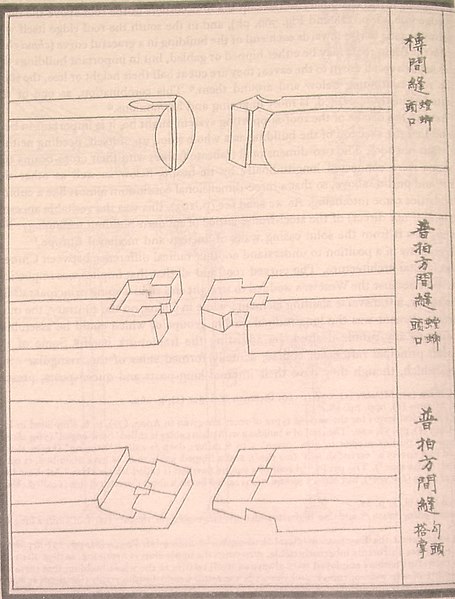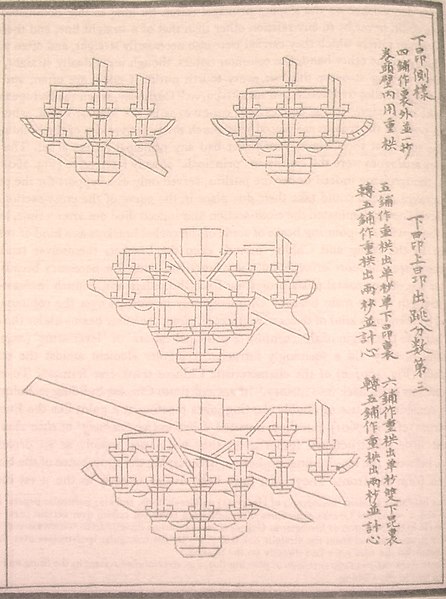Caihua, or "colour painting", is the traditional Chinese decorative painting or polychrome used for architecture and one of the most notable and important features of historical Chinese architecture. It held a significant artistic and practical role within the development of East-Asian architecture, as Caihua served not only decoration but also protection of the predominantly wooden architecture from various seasonal elements and hid the imperfections of the wood itself. The use of different colours or paintings would be according to the particular building functions and local regional customs, as well as historical periods. The choice of colours and symbology are based on traditional Chinese philosophies of the Five Elements and other ritualistic principles.
The Caihua is often separated into three layer structures; timber or lacquer layer, plaster layer, and pigment layer.
Caihua of the Forbidden City
Painted elements can be seen on Han dynasty pottery tower.
Painted elements can be seen on Han dynasty pottery tower.
Example of Tang dynasty decorative motifs, from mural of Mogao Caves.
The Yingzao Fashi is a technical treatise on architecture and craftsmanship written by the Chinese author Li Jie, the Directorate of Buildings and Construction during the mid Song Dynasty of China. He revised many older treatises on architecture from 1097 to 1100. By 1100, he had completed his own architectural work, which he presented to Emperor Zhezong of Song. The emperor's successor, Emperor Huizong of Song, had the book published in 1103 to provide architectural standards for builders, architects, literate craftsmen, and the engineering agencies of the central government. Li Jie was then made the Director of Palace Buildings. Thereafter, Li helped oversee the construction of administrative offices, palace apartments, gates and gate-towers, the ancestral temple of the Song Dynasty, along with numerous Buddhist temples.
Bracket arm clusters containing cantilevers, Yingzao Fashi
Tenon and mortice work of tie beams and cross beams, Yingzao Fashi
A page from 1145 Song dynasty edition of Yingzao Fashi, vol 8
Bracket arm clusters containing cantilevers, Yingzao Fashi (1103)








